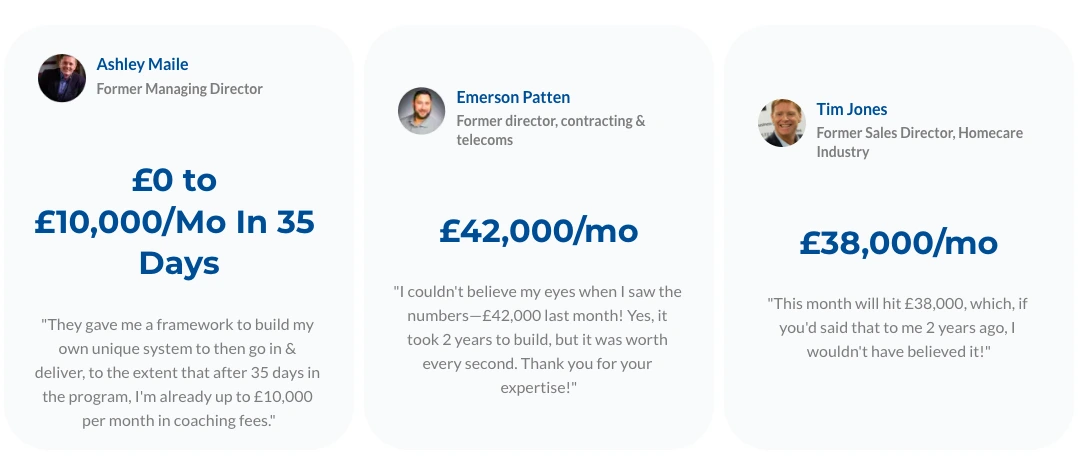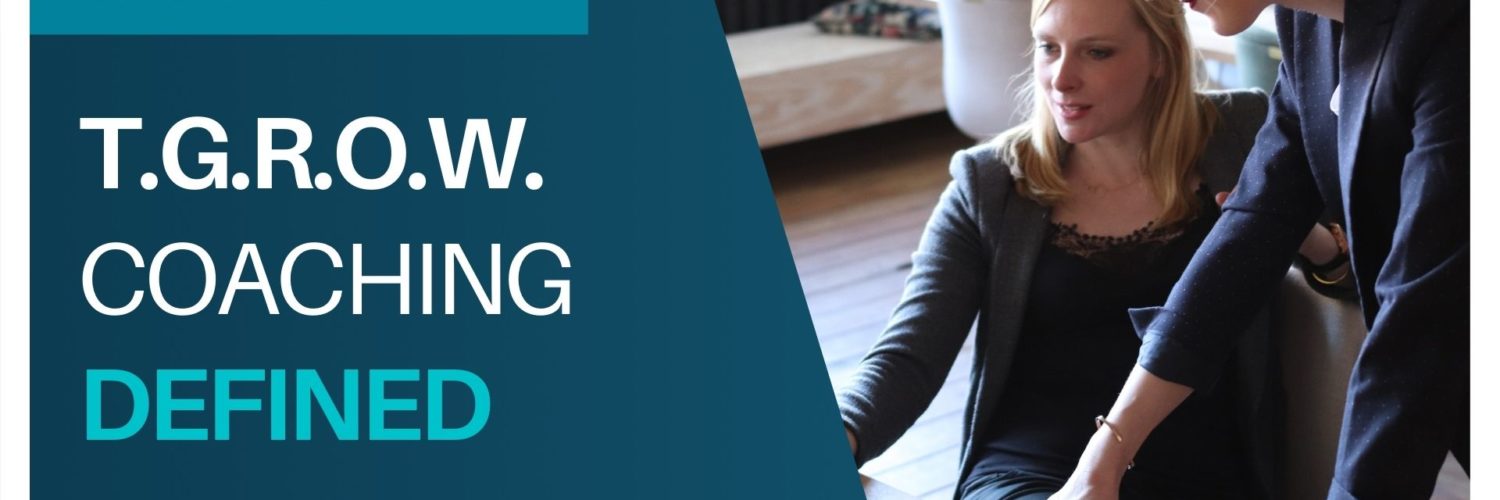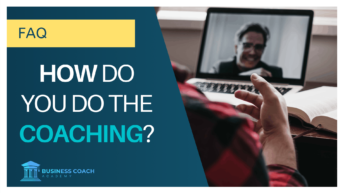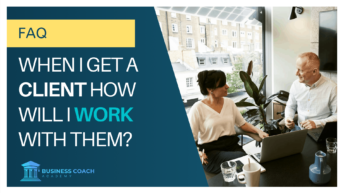The GROW coaching model is by far one of the most widely used models in modern coaching, be it life coaching, business coaching, or any other number of coaching practices. But where does the TGROW model fit into all of this? In today’s blog, I’ll be answering some common questions like: What actually is the TGROW model? Who created it? And how can you apply it to the practice of business coaching? Each section is peppered with my own thoughts, all based on my 10+ years of experience coaching clients, so let’s jump straight in.
What is the TGROW Model, and How Does It Work?
The TGROW model is a coaching framework that helps individuals set goals, explore different perspectives, identify options and actions, and establish a clear plan for achieving their goals. Many coaches use this model to guide their clients through a structured process of self-discovery and personal growth. It’s a great structure to follow if you want to ensure that all of your coaching sessions are as effective as possible. But, in a nutshell, the TGROW model will guide you in the coaching of your clients/coachees.
You need to get a shift in your coachee’s thinking and/or behaviour for truly effective coaching to take place in the session. It might only be a slight shift, but even the slightest of shifts can bring about exponential results.
Who Created the TGROW Model?
Sir John Whitmore originally published the GROW coaching model in his 1992 book, “Coaching for Performance.” The book sold over 1 million copies, mostly to managers and executives—one of the many reasons that the GROW coaching model became one of the most widely adopted models for coaches worldwide.
Myles Downey’s Adaptation
Somewhere along the way, Myles Downey created his own, modified GROW coaching model with a newly added element preceding all others in the GROW coaching model. His reasoning for adding the topic element was the need to have an appreciation of the environment an organisation is currently in.
This wider picture enables you, as the coach, to understand the context of the issue to be addressed through coaching. Once the context has been defined, you can help the coachee set appropriate goals that are motivating for the environment they work in.
Here’s a quote from Sir John Whitmore himself:
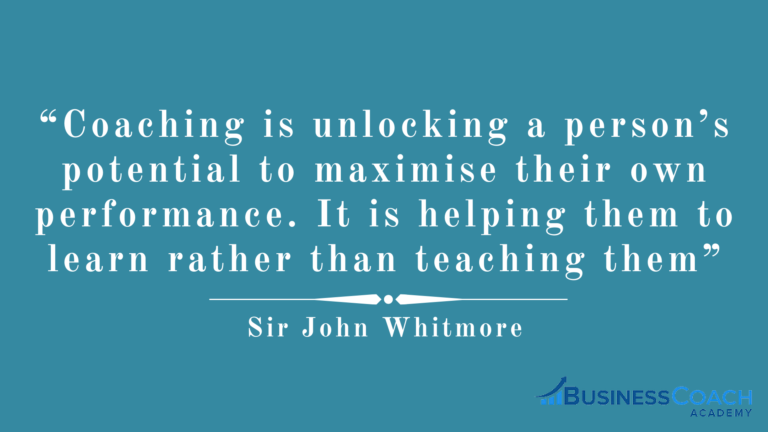
Since Miles Downey created the TGROW model, there have been more adaptations made to it. The COACHED Model is a coaching model developed by Business Coach Academy founder Zander Woodford-Smith and integrates the TGROW model among other coaching frameworks to provide a more complete coaching model.
What Does the TGROW Model Stand For?
So, now that we’ve got some context, let’s take a look at what each letter in the acronym actually stands for.
T – Topic
G – Goal
R – Reality
O – Options
W – Willingness
T stands for Topic
The first step is all about getting clarity on the topic that your client/coachee wants to address. Clarification and exploration of the scale of the topic are essential to understanding the bigger picture in terms of why this is important to the coachee and, perhaps, their longer-term vision.
Discussing the Topic can uncover issues that are different from what the coachee originally said they wanted to cover, which may change the focus of the coaching session and create a need to re-prioritise. Challenge your coachee if they have a different priority than what was originally discussed. Explore the reason for the re-prioritisation and then continue the session.
This Topic stage can differentiate the bigger picture from the specific goals that arise in the Goal stage. It forms a solid foundation and ensures that goals are set after the bigger picture is clarified. If you set goals before the motivation behind them is checked, it can lead to irrelevant goals that the coachee is not committed to—a lose-lose situation.
Remember, a coach facilitates change in a person’s behaviour by unlocking their potential to maximise their own performance, just as Sir John Whitmore said.
As their coach, you need to guide them in learning how to achieve self-improvement by supporting the individual in a safe environment of trust in order to acquire the necessary tools and skills and to identify barriers that stand in the way of them achieving personal and professional goals. It is essential for you to have a willing and engaged coachee with whom you’ve built up a strong rapport, as this is the oxygen of any solid coaching process.
A great coach will have initiative, emotional intelligence, self-awareness, and good listening skills. They’ll bring about a change in thinking or behaviour by using non-directive language and questions.
As their coach, you need to have optimism about your coachee’s ability to change and work with them with empathy. Do not collude with your coachee.
Some questions you could ask:
Ask open questions so that you do not get a yes/no answer, and the coachee needs to explore their thoughts deeply.
- “What else could you do? And what else… and what else?”
It is not a linear set of thinking, it is expanded. When they say ‘nothing’, say,
- “Well, if there was something else, what would it be?”
- Where do you want to start today?
- Where are you with your thinking for today’s session?
- What topic do you want to cover today?
- What areas do you want to address?
- What is behind this?
- What is missing for you right now?
- What would this mean to you?
- How important is this to you?
The caveat to this would be when a coachee is getting lost in their stories or is very talkative, and you feel like you are herding squirrels. When this is happening, don’t ask open questions; ask some questions that simply require a yes/no answer to move things along, otherwise the conversation could have a negative impact on the coaching session.
Ask the right questions in the right sequence.
Getting the questioning sequence right is what gets the results. Below is a simple formula you can follow:
2 X WHERE
4 X WHAT
1X HOW
- Where do you want to go?
- Where are you now?
- What is getting in the way?
- What would happen if it could be removed?
- What will be the consequences of not doing it?
- What will be the benefit of achieving it?
- How much do you want to do it?
Apply this structure, whatever they are saying.
- Craft the questions to fit the situation.
- Predicate the timeframes.
- Establish the next steps.
Remember to ask a closed/specific question if you want to move on quickly.
Be the coach. Ask challenging questions.
DON’T ASK LEADING QUESTIONS; they can very quickly change the dynamic of the session. It’s your job to empower your clients, not disempower them.
DO NOT ASK MULTIPLE QUESTIONS: they will seem like a blur to your coachee. They’ll latch on to one thing, and you’ll lose the rest.
G stands for Goal (or Goals)
The setting of specific goals (This includes anything from long-term aspirations to short-term goals, even goals for the coaching session itself.)
Example questions to ask are:
- What is the problem that you want to resolve?
- What do you want to work on?
- What are you looking to achieve?
- What outcome do you want to get?
In this section, it is important to apply a time frame to the goals. In the previous Topic section, you’re less likely to do this since you’ll be more focused on the overarching goals.
R stands for Reality
In the reality section of the coaching process, you need to establish and understand where the coachee is now in relation to their goals and aspirations. You need to read between the lines and make sure that they are not in denial or delusional about their current reality.
Questions in this area could be:
- So, where are you now?
- Where are the obstacles to resolving/creating this?
- What are the key barriers to resolving the situation?
- What have you done so far?
- What is likely to happen if things do not change?
- How is it impacting you?
- How is it making you feel?
Ask questions that inform the coachee for a breakthrough, not questions that instruct them. Don’t ‘lead the witness’.
It’s also important that you don’t offer solutions. It needs to be their idea to keep the coachee empowered. If it’s your idea, the coachee won’t have the same motivation to make it work.
O stands for Options
Explore options for moving forward. The options and willingness sections establish responsibility.
Use the 4 quadrants model here.
The 4 quadrants model is a concept created by Ken Wilber. Using this model will enable you, the coach, to take into account as many perspectives as possible and provide a more nuanced, comprehensive coaching experience. After gaining insights from each quadrant, you can develop a more specific and practical action plan moving forward.

Discuss. The coachee will be doing 75% of the talking in the coaching session. Remember WAIT… Why am I talking?
Explore the Impact vs. Difficulty.
Ask questions to stimulate your coachee’s thinking.
Power of the observer: you will learn more by being quiet.
Wisdom is being quiet when you wish you were talking.
Look at the critical drivers, K.P.I.s, that will measure, manage, and control the parameters for R.O.I.
Why—do not ask WHY—it will lead your coachee to make excuses or start blaming something or someone.
Ask questions that take your coachee up to abstract level, down to a specific level:
- Where do you want to get to?
- Where do you want to start?
- What would be an ideal outcome?
- What difference will it make?
- What else can you do? LISTEN…What else? LISTEN…What else? KEEP GOING…
- What have you done in similar situations?
- Who else could support you with this?
- Who could give you a different perspective?
- What is your preferred option?
- What would be the next best thing if this were not possible?
- How will you start it?
- Identify and agree on specific actions.
W stands for Willingness
Sometimes, in GROW models, the W is listed as “Wrap Up” or “Way Forward.”
I prefer Willingness, as this is critical to establish to ensure your coachee is committed to achieving the goal. This is a good place to use the Line of Continuum model that you learn in the P.R.O.F.I.T. System.
Questions in this area might include:
- Where are you with your willingness to do this?
- Where do you need to start?
- What is the smallest thing you can do to get started and move forward?
- What obstacles do you think you might face?
- What could get in the way of you doing this?
- What is the next step? LISTEN. When?
- Who needs to know?
- What support will you need to stay on track?
- How do you want us to work together on this?
- What is the best way for us to follow up?
- How do you want to keep yourself accountable?
Start Using the TGROW Coaching Model
Now it’s time to practice TGROW coaching yourself! Look at what you want to achieve for yourself. Find someone who is stuck trying to achieve a goal and get practicing your new skills.
Business Coach Academy excels at helping experienced business directors become prestigious 6/7 figure business coaches. Using our unique framework, we’ve helped 100s of highly experienced directors and former business owners achieve the income, freedom, and autonomy they desire, so they can spend less time working and more time doing the things they love.
Learn more about how you can become the next Business Coach Academy success story here.
